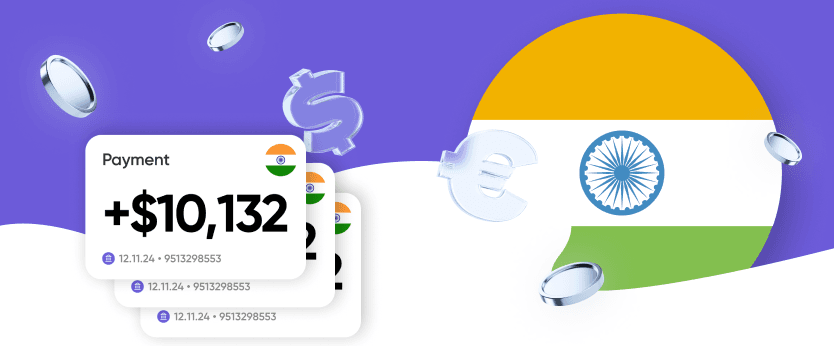UPI is revolutionary digital payment system in India. This system offers fast, secure way to transfer money. It is introduced by National Payments Corporation of India. Such system allows users to link multiple bank accounts in one mobile app. It makes transfers even more accessible.
Millions use this unified transaction platform daily for P2P payouts, bill transfers, and online shopping. Concerning merchants, this payment system also offers convenient ways accepting remittances. Innovative system has significantly accelerated India’s transition towards a cashless economy. Today, it is perfect tool regarding consumers and businesses.
What is UPI: A Short Guide
Many new users are interested in what is UPI? Unified Payments Interface is a real-time payment system that enables instant money transfers between bank accounts. This system uses two-factor authentication technology, securing contributions. Unified Payments Interface allows contributions using only a mobile number or a virtual payment address. This eliminates the need in providing detailed account information.
Its seamless integration into apps has made it the preferred choice. This money transfer interface is already actively gaining the status of an international payment system and enables cross-border payouts. In future, we can expect further development of this payment solution with enhanced banking experience worldwide.
UPI Transaction Limits
Unified Payments Interface imposes transaction limits, ensuring user security. UPI payment limit per day for most users is ₹100,000, although it may vary depending on the bank. Regarding regular users, This limit applies across a wide range covering transfers. However, merchants & businesses may have separate, higher restrictions depending on their agreements with banks.
UPI Transaction Limit per Day
Standard UPI daily limit for most users is Rs 100,000. Different banks plus Unified Payments Interface apps apply these limits. However, in some cases, higher limits are provided. E.g., transactions concerning tax payments or education fees may allow higher daily limits.
Most banks set a 10-20 UPI transaction limit per day. This aims at preventing potential fraud. Generally, this transfer number is suitable for regular users. However, if these limits are unsuitable, consult with your bank about changing them.
Per-Transaction Restrictions
Unified Payments Interface also sets a new UPI transaction limit between INR 25,000-100,000 depending on the bank. This limit ensures that large transfers are processed securely. Users should check their bank’s policies for any updates.
UPI Transaction Limit per Month
Also, abundant banks set UPI transaction limits per month. Regarding individual accounts, this limit is usually in line with the bank’s normal policy. Higher limits are available for business accounts. These monthly limits help alleviate system congestion.
Exceptions & High-Value Transactions
Educational, healthcare with capital markets sectors benefit particularly from extended platform limits. E.g., educational institutions often require higher limits for service settlements. Healthcare providers may need such limits to clear a payment for an expensive treatment. Such customized limits ensure that such important transfers can be made without any hassle.
Transfer Caps at Leading Indian Banks
Check out what is the limit of UPI transaction in India:
| Bank Name | Daily Limit (₹) | Per-Transaction Limit (₹) | Daily Transactions Limit |
|---|---|---|---|
| State Bank of India | 1,00,000 | 1,00,000 | 10 |
| HDFC Bank | 1,00,000 | 1,00,000 | 10 |
| ICICI Bank | 1,00,000 | 1,00,000 | 10 |
| Axis Bank | 1,00,000 | 1,00,000 | 20 |
| Punjab National Bank | 1,00,000 | 25,000 | 10 |
| Kotak Mahindra Bank | 1,00,000 | 1,00,000 | 10 |
| Yes Bank | 1,00,000 | 1,00,000 | 10 |
Please contact your bank's support service to clarify information on restrictions for your account.
UPI Payment Charges
Unified Payments Interface has gained immense popularity in India, largely because its accessibility and user-friendliness. Generally, most users enjoy free transfers. However, instances exist where payouts incur fees. This is especially true for large transactions. Every payment user should understand possible limitations in managing their finances wisely. Check out the main UPI payment charges below.
UPI Free Transactions
Regarding individual users, Unified Payments Interface payouts below ₹2,000 are usually free. This also applies in cases involving P2P & P2M operations. This means users can buy groceries, pay utility bills, or transfer money without incurring additional charges. Policy has encouraged millions worldwide to use it as a regular payment method. Free regular transactions increase overall user confidence.
UPI Merchant Transaction Limits
Merchant charges play a key role in maintaining a balanced, fair system benefiting businesses. Here are key points about:
- Fee variability by category. Charges differ based on the nature of the transaction, such as purchasing fuel, paying tuition, or buying luxury items.
- Premium services. Transactions for premium services typically incur higher charges.
- Lower fees for essentials. Categories like education or smaller purchases under ₹2,000 may have reduced or no charges
This tiered fee structure promotes fairness and affordability. It helps small & medium enterprises. It supports inclusivity in the merchant ecosystem.
Wallet & PPI Charges
Users may incur minimal fees when processing transactions with PPI. E.g., fees are charged for topping up a wallet of transfering funds. Fees are usually a small percentage based on transaction amount.
These fees apply when users load funds into UPI’s wallets or transfer funds between wallets and bank accounts.
UPI Transaction Limits & Features Across Major Apps
India's Integrated Payment System features several widely used applications like PhonePe, Google Pay or Paytm. Each app offers unique features and adheres to standard transfer limits set by National Payments Corporation of India. Comparative analysis of these apps can help users choose a platform that best suits their needs.
PhonePe
PhonePe is one of the most popular Unified Payments Interface apps in India. Known for its user-friendly interface and seamless service integration, it also features the PhonePe payment gateway, enabling secure transactions across merchants. Users can transfer up to ₹1 lakh per day.
Additionally, PhonePe permits a maximum of 10 daily transactions, after which users must wait 24 hours. App also supports bill transfers, investment options with gold purchase. These features make PhonePe a versatile platform regarding many users.
Google Pay
Google Pay focuses on simplicity with security. Service offers Rs 1 daily transaction limit. App also imposes a 10 lakh daily transaction limit. Distinguishing Google Pay feature is its robust rewards system.
Users can count on cashback and join a loyalty program. Moreover, an app is deeply integrated with Google services.
Paytm
Paytm combines functionality of Unified Payments Interface with wallet, e-commerce, and financial services. Paytm follows ₹1 lakh standard daily limit. Also, integrating Paytm wallet lets users bypass certain Unified Payments Interface restrictions. App also supports large business transactions, making it a popular choice among merchants. Additional features like investments and loans attract a huge user base.
Other Notable Apps
BHIM or Amazon Pay apps are also conveniently interned in Unified Payments Interface. BHIM is a user-friendly app emphasizing the core features in this payment gateway. Amazon Pay allows users to make purchases and pay bills effortlessly. Both apps follow similar transaction limits set by the NPCI.
UPI New Rules
Unified Payments Interface continues to evolve and rolls out updates regularly. These are aimed at improving user security. In 2024, such company introduced several major changes. Let’s take a closer look at the UPI new rules below.
Increased Limits for UPI 123Pay plus UPI Lite
UPI 123Pay is designed specifically targeting feature phone users. This update increased transfer limits. It allowed users to make larger transactions without smartphone usage. Similarly, Unified Payments Interface Lite now also supports higher restrictions. Increased limits allow users to make Unified Payments Interface a more practical tool for small vendors and cash-dominated sectors.
Quota Restrictions Enforcement
India’s National Payments Corporation has introduced volume caps regarding payment apps. Starting 2024, popular apps like PhonePe or Google Pay hold a maximum market share capped at 30% in total transfer volume. This move is aimed at creating healthy competition in the market. Existing apps with higher market share received a phased schedule assisting their compliance with the rule.
Focus on Innovation and Security
NPCI is also focusing on innovation. New features include biometric authentication for large transactions and AI-powered fraud detection systems. These measures are aimed at maintaining UPI's reputation as a safe, secure platform.
UPI for Business
Cashless payment solution also ensures secure digital transactions benefiting businesses. Check out other key benefits of UPI for business.
UPI for Large Transactions and Bulk Payments
Businesses use this solution for large transactions. It includes vendor with salary remittances. Since transaction limits are maximum ₹1 lakh per transaction, many businesses can easily process large transactions. Also, UPI Autopay features simplify processes by automating recurring transactions. These features minimize delays and improve operational efficiency.
Additionally, integrating this payment network with enterprise resource planning systems enables businesses in streamlining financial workflows. Integrating Unified Payments Interface with accounting software helps businesses track transactions in real-time.
Interchange Costs plus Their Role in Financial Strategy
Interchange fees affect how businesses set prices regarding prepaid tools or payment processing. These fees directly affect pricing decisions.
- Fee structure. Merchants pay fees of 0.5% to 1.1%, depending on the payment category. There are limits on large-value remittances.
- Business impact. Small businesses and startups adjust prices to cover costs. Large businesses negotiate lower fees to keep prices competitive.
- Government measures. Exemptions for specific categories ensure affordability of essential services.
Effective management of these fees helps businesses control costs while maintaining customer satisfaction.
Customer Experience
Efficiency of Unified Payments Interface improves the user experience. Its ease of use makes it even more appealing to each customer. QR code transactions offer a convenient way to pay — learn how to make payment using QR code to understand how it works. UPI Lite supports offline remittances, addressing additional customer needs. By offering Unified Payments Interface, businesses showcase their ability to stay updated with modern trends.
Unified Payments Interface provides reliable, cost-effective transaction options regarding Indian users. These solutions are perfectly suited for both individuals and businesses of varying scales, including large or medium-sized enterprises. The service adaptability highlights its popularity and growing need. This payment network guarantees quick money transfers, cross-border transactions or strong support for small enterprises.
Additionally, UPI payment gateway consistently stays ahead by introducing regular enhancements and updates. Regarding merchants, it delivers top-notch services, while for users, it offers seamless convenience and a sense of security. Looking ahead, this payment gateway is expected to broaden its scope and influence even further.
Online Payment Company #1
Online payment solutions for all types of businesses since 2019
Subscribe to stay updated
on industry news, insights, and exclusive offers


